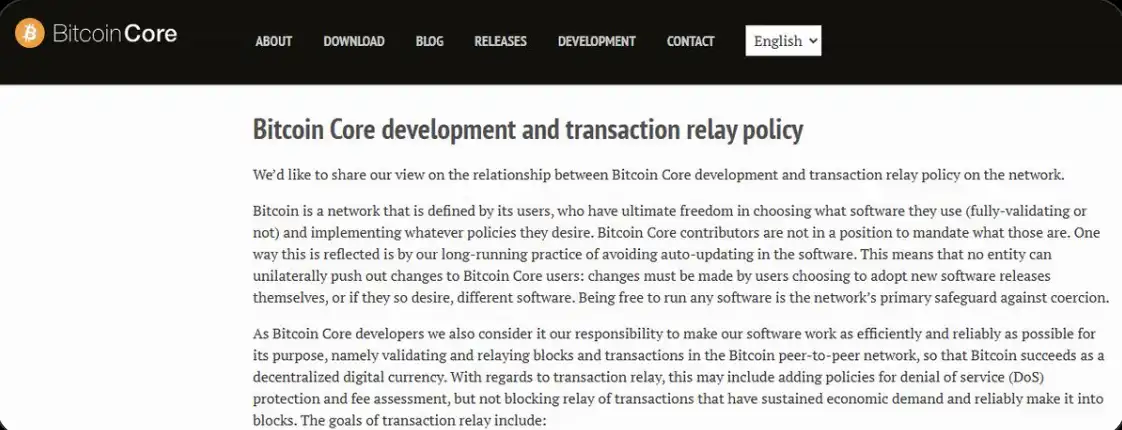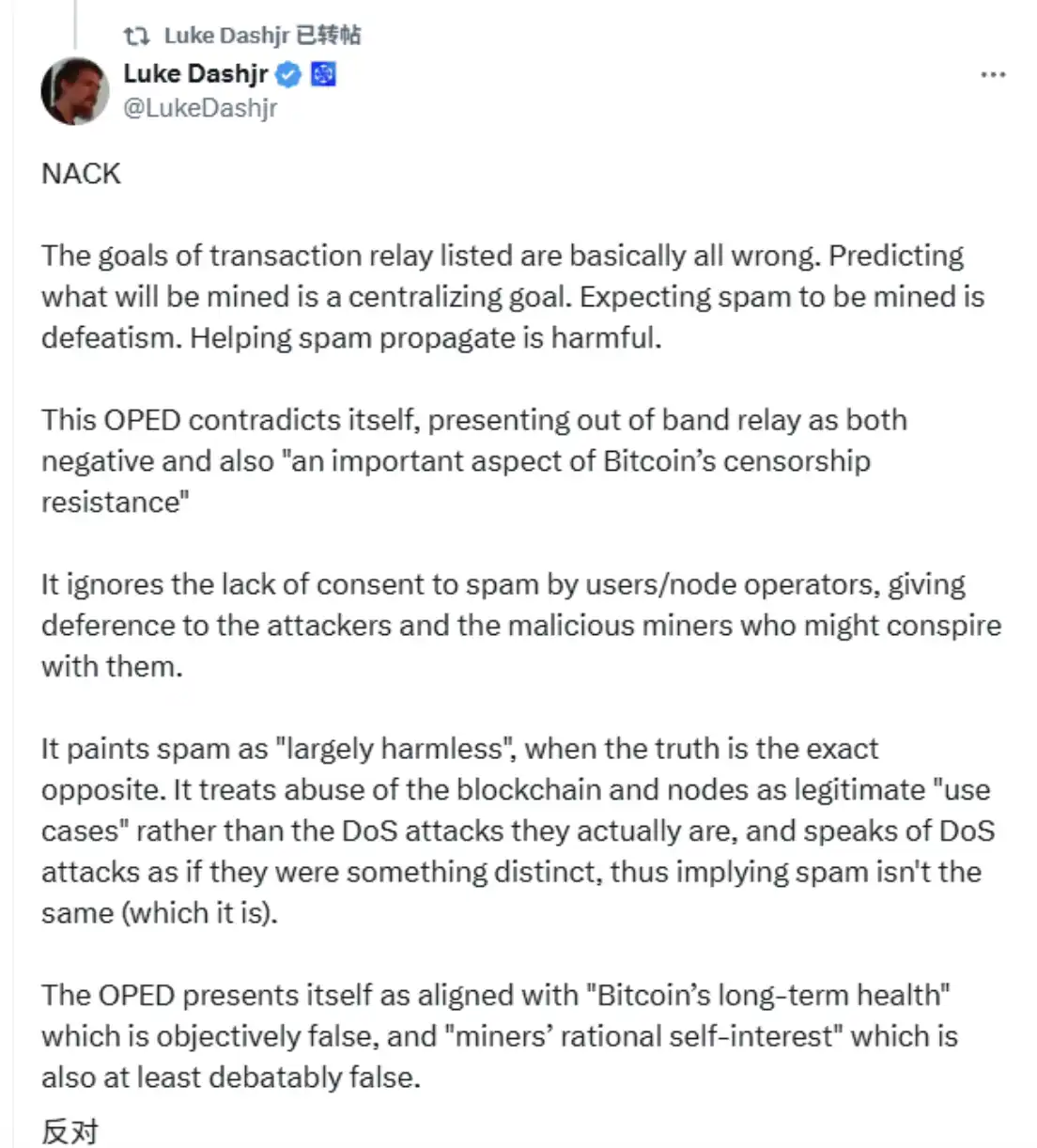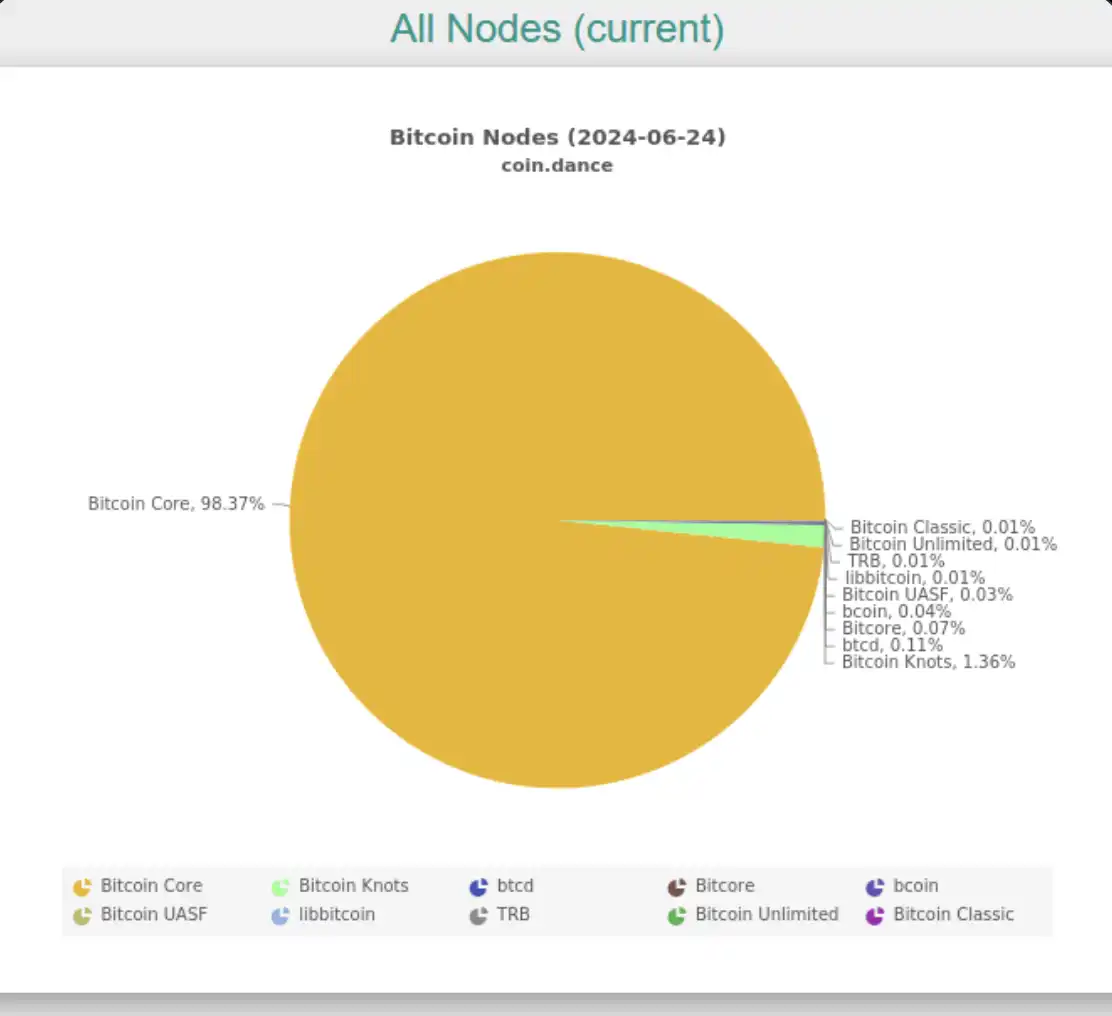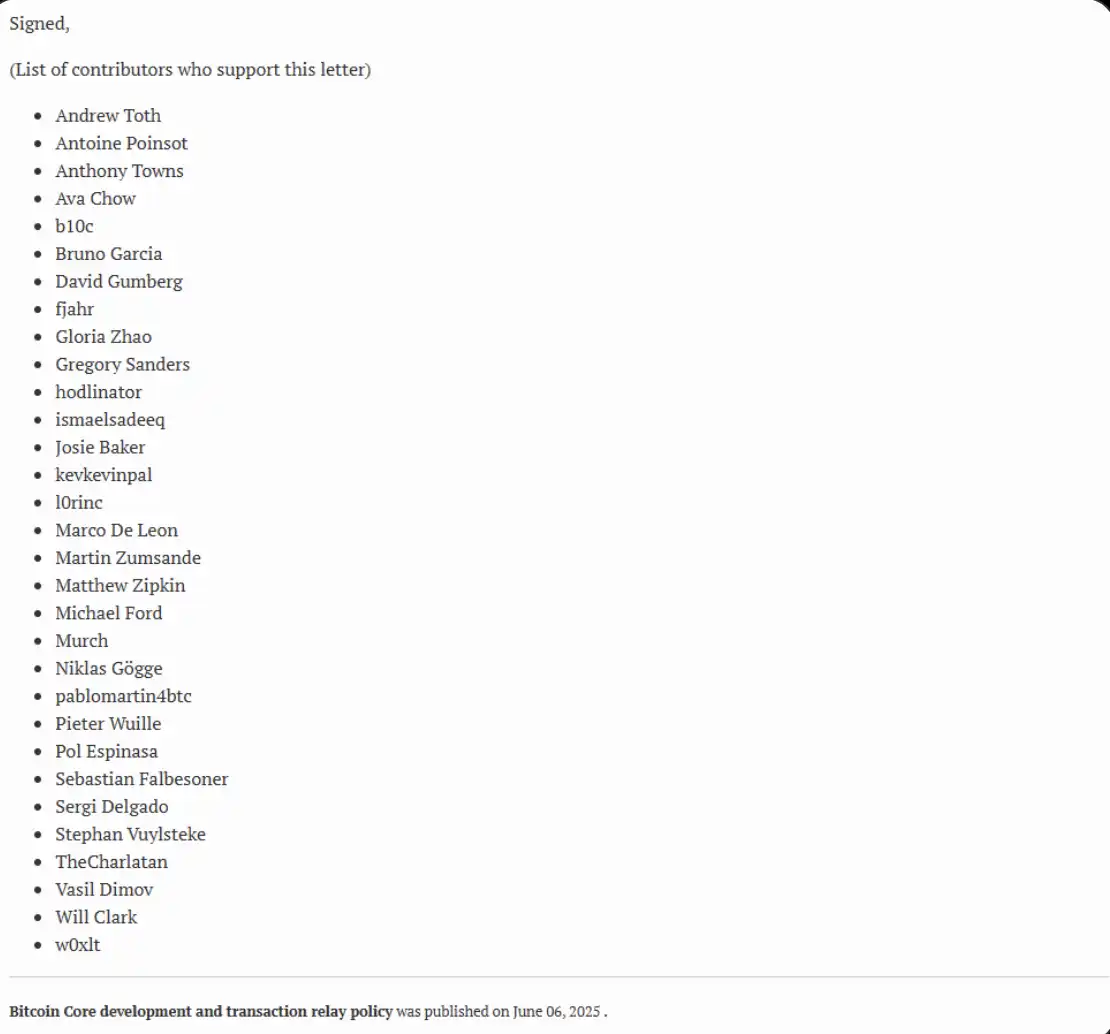Original author: 0xTodd, Partner at Nothing Research
The Core group has released the latest statement, causing a stir in the Bitcoin core development community. I see there isn't much discussion in Chinese, so I will analyze the background of the story and share my strong personal views. First, yesterday Bitcoin Core released a statement titled "Bitcoin Core Development and Transaction Relay Policy," which was vehemently criticized by opponents as notorious as the "New York Agreement."

So what does this statement actually say? Bitcoin Core wants to push for its own built-in transaction relay. I believe this transaction relay is paving the way for the previous removal of the OP-Return block limit. Why has this sparked a lot of discussion?
It's because there is another layer of background to the story, which I have discussed before—two years ago, inscriptions began to flourish, but these inscriptions and runes were sneakily stored in the OP-Return area of Bitcoin blocks through a method similar to "exploiting a bug," thus circumventing the Bitcoin block limit.
As a result, the Bitcoin community is now divided into right-wing and far-right factions. The far-right is repulsed by inscriptions, and under the call of figures like Luke, the second-ranked Bitcoin client, Knots, introduced a garbage filter that directly treats these inscription transactions as garbage transactions and refuses to package them. If you recall, this even led to a sharp decline in Ordi at the time. However, the ordinary right-wing, namely the Bitcoin Core group, believes that since inscriptions can already exploit bugs to get on-chain, it is better to legitimize them rather than let them continue to exploit bugs.
Recently, the Core group proposed a new PR, aiming to change the OP-Return limit from 80KB to unlimited, directly removing restrictions on inscriptions and allowing them to be on-chain openly. Although most inscriptions have been poured out, I believe this is somewhat an additional subsidy for miners, as earning more can make the Bitcoin network a bit more secure.
After discussing the background of the background, let's return to the question—what exactly is this "transaction relay"? Theoretically, Bitcoin is a P2P network, meaning that all miners are connected in a single line. However, this is the theoretically safest approach, and given the current network environment is quite secure, there is no need to be so extreme.
Thus, the "transaction relay" has emerged, allowing everyone to first send transactions to the relay (note that it is not mandatory, it is voluntary), which has two major benefits:
- It helps prevent DoS attacks, as those spamming 0-fee transactions won't overwhelm miners' peer-to-peer servers;
- It speeds up transaction block propagation, and reducing latency helps prevent large miners from gaining an unfair advantage.
This is actually a very good thing. In the past, transaction relays had different strategies; some strictly filtered out garbage transactions, while others were completely free.
PS: I do not consider this transaction censorship; it is more about filtering out garbage transactions, and users can choose not to use these features. In fact, both the right-wing (Core group) and the far-right (Luke and others) have demands for filtering out garbage transactions, but the core contradiction is that everyone has a completely different definition of garbage transactions.

The far-right believes that inscriptions are garbage transactions and should be eliminated; Bitcoin should not become a storage chain. The right-wing believes that we should not censor (inscriptions) or restrict certain transactions from being on-chain. The filter should only filter out pure DoS attacks. PS: Although I used the term far-right here, it does not imply that [far-right] is a derogatory term. The former represents radical garbage filtering, while the latter represents moderate garbage filtering.
In the past, these transaction relays were maintained by volunteers, especially those with [radical garbage filtering rules], because these volunteers had a strong belief—that is, a hatred for inscriptions. However, once the Core group personally added [moderate garbage filtering rules] to the Bitcoin client, it may mean that the market share of those [radical garbage filtering rules] has greatly shrunk.
If you feel a bit confused at this point, let me make an analogy—it's like an official suddenly announcing a CP, diminishing the appeal of fan-made pairings, essentially forcing fans out of the picture. Of course, even though Core currently holds over 90% market share, Core does not consider itself "official."

Because Bitcoin is a network defined by its users, users have the ultimate freedom to choose which software to use and implement any policies they wish. Bitcoin Core contributors have no authority to impose these contents, and to avoid suspicion, they even refrain from automatic software updates.

Personally, I actually support the Core group's updates. As I said, if your fence is only 10 centimeters high and others can come and go freely, you might as well tear it down for convenience. Although I personally have no feelings towards inscriptions, I do not consider them garbage transactions; as long as they pay normally, they are good transactions.
Inscriptions also pay fees according to their size, and there is no need to be at odds with money, and they provide miners with additional income, which helps keep Bitcoin strong and secure even after multiple halvings. Moreover, I firmly oppose transaction censorship, as any discrimination against transactions that pay normal fees by the semi-official nature of Core could slowly turn into transaction censorship.
One of the proudest attributes of Bitcoin is its security and lack of transaction censorship. Adopting moderate garbage filtering rules benefits both of these characteristics. Opponents criticize this as a compromise by the Core group towards miners (due to considerations of miners' income) at the expense of its users. I disagree with this view—users of inscriptions are also users of Bitcoin.
Times have progressed; we are no longer in the hardware environment of 2008. If in 2025, Bitcoin's blockchain stores some text and images, it is not a difficult task for nodes, and Satoshi himself engraved the news of the time in the genesis block. Bitcoin will never become a storage chain, but without cutting into the underlying structure, what harm is there in treating data storage as a part-time job?
Real physical gold can be carved to leave records, and our electronic gold should also allow for this. Therefore, I strongly support the Core group's proposal.
This article is from a submission and does not represent the views of BlockBeats.
免责声明:本文章仅代表作者个人观点,不代表本平台的立场和观点。本文章仅供信息分享,不构成对任何人的任何投资建议。用户与作者之间的任何争议,与本平台无关。如网页中刊载的文章或图片涉及侵权,请提供相关的权利证明和身份证明发送邮件到support@aicoin.com,本平台相关工作人员将会进行核查。




